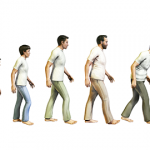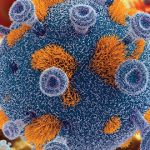The mutation accumulation theory is based on a hypothesis put forth in 1952 by the Nobel laureate Sir Peter Medawar. It proposes that aging is due to random mutations that cause adverse aging characteristics. Thus, aging is the phenotype of an array of genetic disorders, each of which leads to adverse symptoms only at advanced ages. Unlike the earlier wear-related theories, the mutation accumulation theory does not establish any specific, inescapable cause of aging. Since aging is the result of adverse mutations, deletion of these mutations could promote longevity, perhaps indefinitely.
The fourth theory of aging is based on the concept of antagonistic pleiotropy, first proposed in 1957 by the late professor George C. Williams of the State University of New York at Stony Brook. This concept explains why genes can be selected for their beneficial effects in early life despite having negative effects in later life. This idea does not contradict Darwinian principles, since genes tend to have larger impacts on fitness in an organism’s prime than in its later years. For example, higher serum testosterone levels may promote increased fitness in younger males, while causing decreased fitness in later life due to a higher risk for prostate cancer.
Inflammaging
Immune aging is associated with the loss of some critical immune functions, such as host protection from infection and malignancy. Paradoxically, immunosenescence also renders the host susceptible to inflammation, which may translate into tissue damaging disease as the aging immune system loses its ability to maximize inflammatory protection while minimizing inflammatory injury. The net result is a low-grade chronic proinflammatory state that Italian investigators, led by Claudio Franceschi MD, professor of immunology at the University of Bologna, Italy, have termed inflammaging.2 Inflammaging proposes that aging can be driven by proinflammatory cytokines such as interleukin (IL) 1 and tumor necrosis factor (TNF)–α and other substances produced by the innate immune system. In later stages of life, these potentially harmful signals may act antagonistically to the beneficial role they provided in an earlier stage of life, when they served as developmental engines for body system formation. Although macrophages are generally thought to be the primary producers of these cytokines, aging is associated with a decrease in macrophage production of proinflammatory cytokines. In contrast, senescence of fibroblast and epithelial cells is associated with an increase in their secretion of multiple growth factors, adhesion molecules, and cytokines, including IL-6. Based on observations in mice, aging adipose tissue may also be a source of heightened TNF and IL-6 expression.



